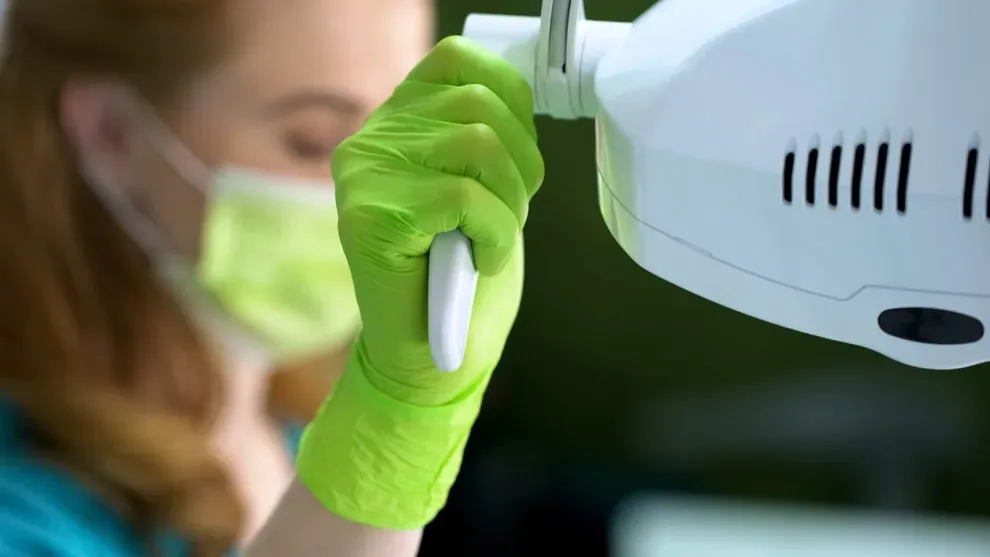Everything You Need to Know About a Dental Bone Graft

Table of Contents
- When Are They Necessary?
- Types of Bone Grafts
- How to Prepare
- The Procedure
- Recovery & Aftercare
- Are They Painful?
- Side Effects
- Prevention
- Cost
- References
A dental bone graft is the process of taking bone material from another source (a cadaver, an animal or even a patient’s own body) and transplanting it into a person’s jawbone. The necessity of such a graft is that there may be a need to build up a jawbone to improve the fit of dentures or to strengthen the jawbone before a tooth implant procedure.
Dental bone grafts are routine procedures with few risks and little required follow-up care. Depending on the underlying reason for the bone loss, they may be covered by dental or medical insurance.
When Are Bone Grafts Necessary?
Oral surgeons turn to dental bone grafts when their patient has lost too much of their natural jawbone to maintain their quality of life. Specific dental procedures that require the use of a bone graft include:
Socket preservation. When a tooth is lost, grafting some bone into the socket can slow down the bone loss that would usually occur.
Ridge augmentation. If a patient did not receive a socket preservation graft after losing a tooth or has been missing that tooth for a long time, their jawbone may have thinned too much to support a denture or implant. This type of graft rebuilds the bony ridge under their gums to help support the prosthetic that the patient will use.
Sinus lift. When a patient is missing their back teeth, their sinuses can begin to drift into the spots where their teeth used to sit. The sinus lift fills those spaces with bone grafts to keep the sinuses in their proper place.
Periodontal bone graft. Bone loss from periodontal disease can cause the teeth in the infected area to shift. A periodontal bone graft reinforces the bone around those teeth and stabilize them so they can continue to be useful.
Types of Bone Grafts
Surgeons perform bone grafts from bone material harvested from many different sources. The procedure has varying names based on which type of material the surgeon uses.
Allografts use donor bone material from human cadavers.
Xenografts use compatible bone material from animals.
Alloplastic grafts use synthetic bone-like materials.
Autologous grafts use bone from the patient’s own body.
Autologous grafts have the highest chance of success, but fear of pain and complications leads many people to choose another graft option. Research suggests that patients are more likely to opt for an autologous graft if the bone material is harvested from inside their mouth.
Doctors also turn to additional materials such as polymers, calcium phosphates, stem cells and bioglass as well as other materials as they seek an optimal graft result. Your oral surgeon will advise you if they think your case would benefit from the use of any of these materials.
How to Prepare for a Dental Bone Graft
Before you receive a dental bone graft, your dentist will perform a full oral exam and assess the health of your teeth and gums. They will also take X-rays of your jaw to determine the density of your jawbone. X-rays will be a key determining tool to measure if you need a bone graft at all.
If your dentist does decide that a graft is necessary, they will explain the procedure so that you know what to expect. This is the time to tell your oral surgeon about any medications you are taking and the general state of your health.
If you are too frail, you may not be a good candidate for dental bone grafts. You may also need to pause certain medications for a while before your procedure takes place.
Make arrangements to keep yourself comfortable after your surgery. For example, you might stock up on soft or liquid foods like soup or ice cream so you know you will have access to food you will be able to eat without pain.
Do not eat or drink anything after midnight on the day before your bone graft procedure. This will reduce your risk of aspiration (breathing in or choking on regurgitated food or drink) during your surgery.
The Procedure
All bone graft procedures begin with anesthesia. Depending on your needs, you might remain conscious during the surgery or be fully unconscious. Whichever you choose, you should be pain-free throughout the entire procedure.
If you still have any teeth in the area where your jawbone has degraded, they may be pulled before your surgery begins. This can be done during the same procedure as the graft without waiting for the tooth socket to heal.
When the procedure finally begins, the first thing your surgeon will do is make an incision with a scalpel at the graft site. This gives them access to the bone lying underneath it.
If you're scheduled to receive a graft from your own bone, your surgeon will then make another incision at the donation site. This area will usually be somewhere on your leg, hip, ribs, or elsewhere in your mouth. They will use special tools to cut through your bone and take out a very small piece of it.
Once the material is ready, the surgeon will place it in the part of your jawbone that needs to be built up. If it cannot be firmly secured to the area, they may use small screws to fasten it in place.
Your surgeon will then close the area where your graft was placed. If you received bone material from your own body, they will also close that incision.
Recovery and Aftercare
For the first few days after your bone graft, you should:
Take the pain medication and/or antibiotics prescribed by your oral surgeon. Be sure to take them in the proper dosage amounts and finish the entire course of medication even if you are feeling better.
Avoid hard or sticky foods that may strain your jawbone or dislodge clotted blood from the healing site. Stick to soft foods like pudding, applesauce, and room-temperature soup.
Avoid hot foods and drinks, such as hot tea or soup.
Use ice packs or cold compresses to control any pain and swelling.
Brush and floss your teeth as usual, but do not disturb the graft site.
Do not drink alcohol or smoke for at least two weeks after your surgery. Doing so will slow your healing process and may increase your risk of complications.
You will begin to feel better within the first 48 hours after your surgery. After two weeks, almost all the discomfort should be gone.
However, do not assume that you have finished healing just because you feel better. The average person takes several months to fully heal from a bone graft. If you received the graft to support a dental implant, you will need until the entire healing process is complete to receive your implant.
Are Bone Grafts Painful?
Bone grafts are not painful. You will be anesthetized during your bone graft surgery, so you shouldn't feel any pain from the procedure itself. Afterwards, you may feel mild to moderate discomfort as your wound begins to heal. This is normal and indicates that your bone is reforming as your surgeon intended.
If you do experience severe pain after your procedure, this may be a sign that your body is developing an infection or rejecting your graft. Call your oral surgeon immediately and tell them what is going on. They will likely want to see you for a follow-up appointment to get a better look at your surgery site and perform any tests needed to confirm what the problem is.
Side Effects
Bone grafts carry the same risks as most surgeries. These include:
Infection at the graft site
Excessive bleeding
Nerve damage
Blood clots
Complications from the anesthesia
Rejection of the bone material
There are certain characteristics that may put you at greater risk of developing these side effects, such as smoking or having diabetes. Be sure to ask your oral surgeon about your individual risk profile before agreeing to bone graft surgery.
Prevention
Not every cause of bone loss in the jaw is preventable, but many are. If you want to reduce your chances of needing a dental bone graft, be sure to:
Preserve your teeth for as long as possible through good oral hygiene
Visit your dentist regularly for dental cleanings and oral health exams
Eat a diet fish in calcium and vitamin D.
Get regular X-rays to monitor your jawbone for early signs of osteoporosis.
Cost of Bone Grafts
Dental bone grafts typically cost between $200 and $1,200 per site when the bone material is sourced from cadavers or animals. Patients who choose to have their grafts done using their own bone can expect to pay between $2,000 and $3,000.
When dental bone grafts are performed for the purposes of placing an implant may be billed separately or as part of the cost of the implant. Dental or health insurance may cover the procedure if the person’s bone loss stemmed from an injury or medical condition.
If you need X-rays, a CT scan or any other imaging performed as part of the treatment process, you will face additional costs.
